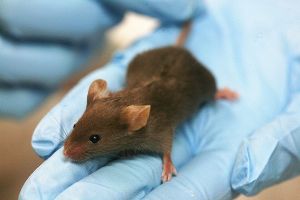[ad_1]
We’re all familiar with the word protein as it relates to a healthy diet. But what about as it relates to healthy hearing? It turns out the latest word in research into age-related, genetic and noise-induced hearing loss is exactly that: Protein. Studies are showing that certain protein-coding genes might be the key to future treatments for hearing loss of all types.
A team composed of scientists from the University of Michigan Medical School’s Kresge Hearing Research Institute and Harvard University have had success reversing noise-induced hearing loss in mice by focusing on a particular protein known as Neurotrophin-3, or NT3.
Once the scientists determined the importance of NT3 in maintaining communication between the ears and brain, they started looking at the cells that form the base for the vital hair cells that help carry sound waves to the brain. They found that these so called “support cells” actually have a critical role, as do the NT3 molecules that they produce. Without NT3, the body is unable to maintain the lightning fast connection between the hair cells and the nerve cells.

hearing loss is providing solutions to reversing
this type of loss.
This connection, known as a ribbon synapse, can become damaged due to age or noise exposure. And once the connection is damaged, hearing loss occurs. The problem is that the damage isn’t visible and, as in the case of age-related hearing loss, it can sometimes take years before the problem manifests itself.
But now there is hope that damage to those connections could someday be treated. “It has become apparent that hearing loss due to damaged ribbon synapses is a very common and challenging problem, whether it’s due to noise or normal aging,” says Dr. Gabriel Corfas, team leader and director of the Kresge Hearing Research Institute. Using special genetic techniques, scientists enabled mice with noise-induced hearing loss to produce extra NT3. The mice that produced extra NT3 regained hearing, while those with normal levels of NT3 did not. Of course what works in mice doesn’t necessarily translate to people; the next step is exploring the role of NT3 in humans and seeking drugs that might boost NT3 action or production.
In another nod to the role of protein and gene therapy gaining prominence in the field of hearing loss, researchers from Washington University School of Medicine believe that yet another protein-coding gene could be the key to age-related or genetic hearing loss in humans: FGF20. They bred mice that were genetically modified to lack FGF20, and found that those lacking it experienced profound hearing loss from birth.
When studied further, it was found that the lack of FGF20 caused the portion of the inner ear containing a certain type of hair cell to become stuck in an early stage of development. Though they believe this could represent a critical link to discovering one cause of genetic hearing loss, scientists stress that more research is needed. While still far down the road, the ultimate goal would be to stimulate growth, re-growth or repair of hair cells that were damaged as a result of age or somehow abnormal due to genetics.
Many of the genetic mutations that cause hearing loss affect the proteins necessary for the development and maintenance of healthy hearing structures. In the absence of the proteins, changes or abnormalities occur in the microscopic hair cells found in the inner ear and can affect their ability to signal the nerves to carry sound to the brain. Researchers at the National Institute on Deafness and other Communication Disorders (NIDCD), in collaboration with National Heart, Lung and Blood Institute, are looking specifically at a protein called myosin 15, one of the so called “motor proteins,” as it acts as a sort of moving transport system to help construct the stereocilia (one portion of the crucial hair cells). Without myosin 15, healthy development of the structures and connections of the inner ear is impossible.
What does all of this mean? With over 26 million adults experiencing noise-induced hearing loss, and over 80 percent of those over 65 experiencing age-related hearing loss to some degree, the ability to reverse hearing loss would be a major breakthrough and life changing for millions of people. In addition, three out of 1000 babies are born with hearing loss; 60 percent of infant hearing loss is due to genetics. Advances in the study of these vital proteins could dramatically reduce these numbers.
“We began this work 15 years ago to answer very basic questions about the inner ear, and now we have been able to restore hearing after partial deafening with noise, a common problem for people. It’s very exciting,” Corfas said in a press release.
[ad_2]
Source link

